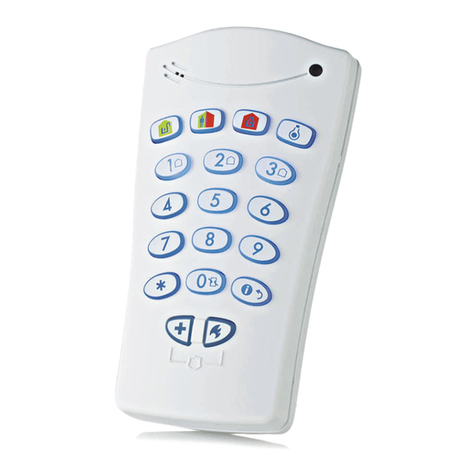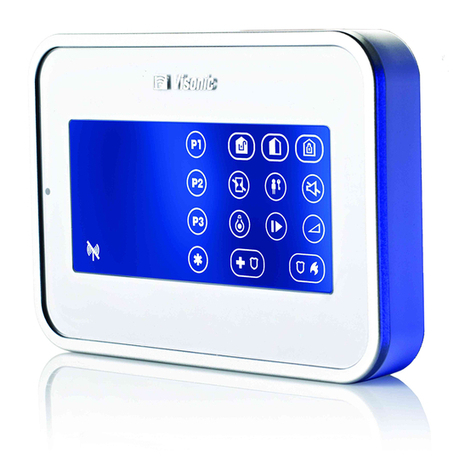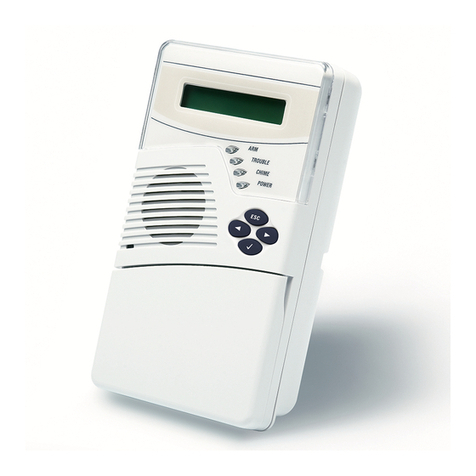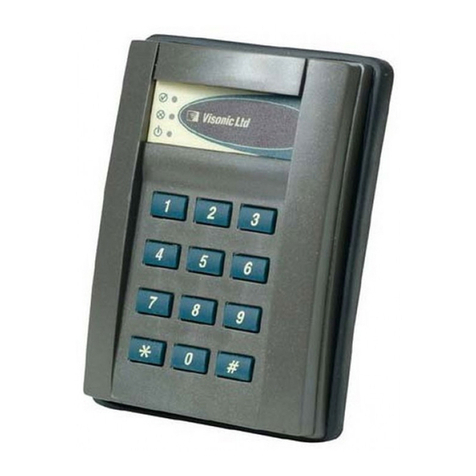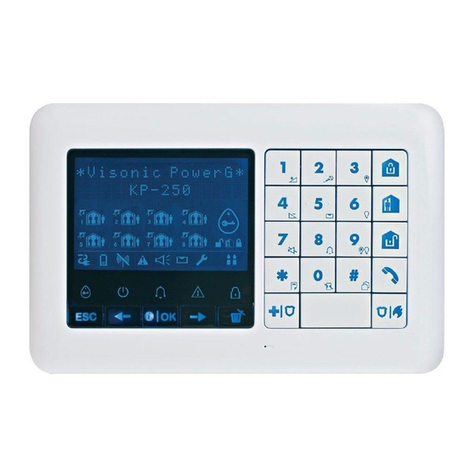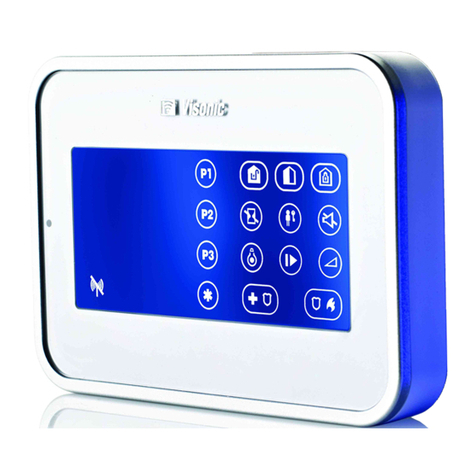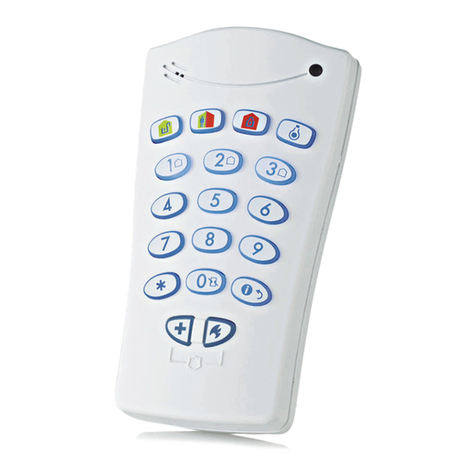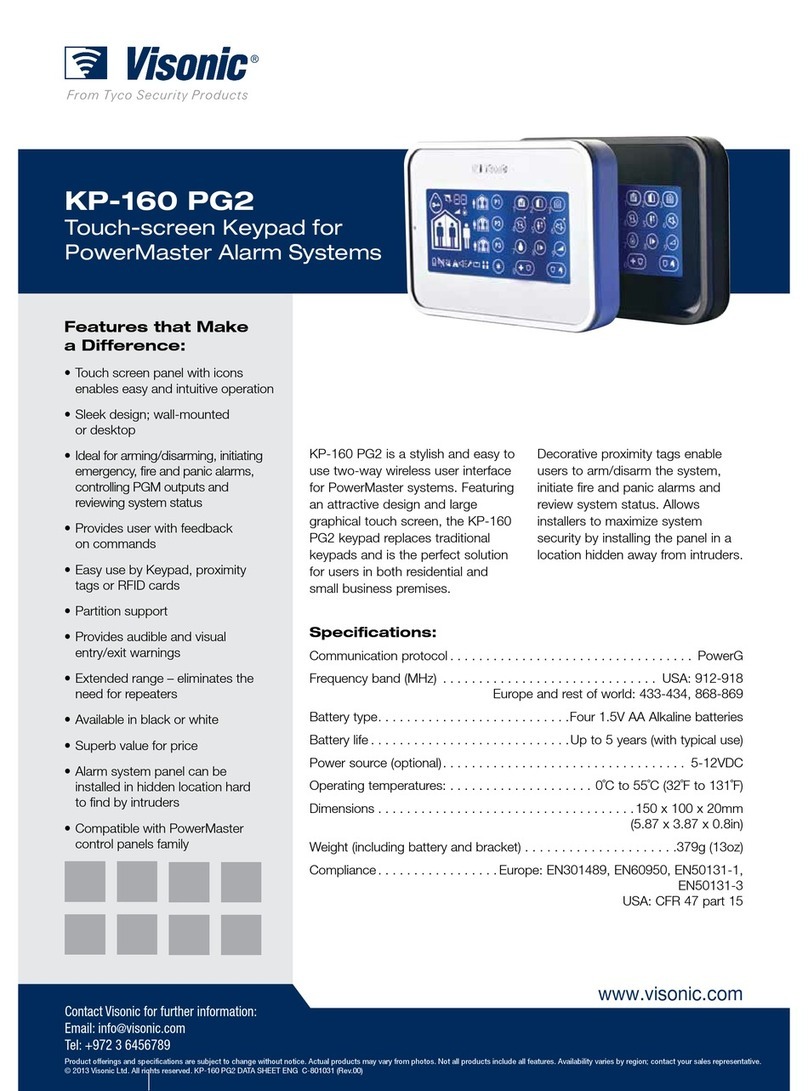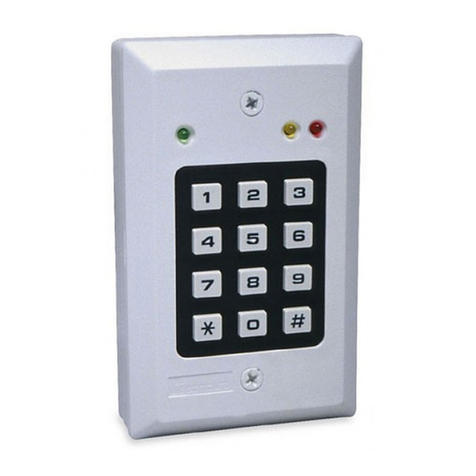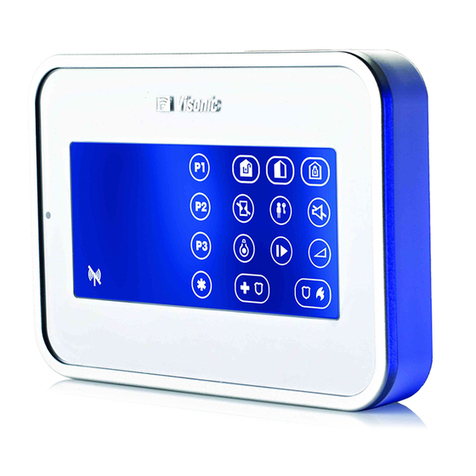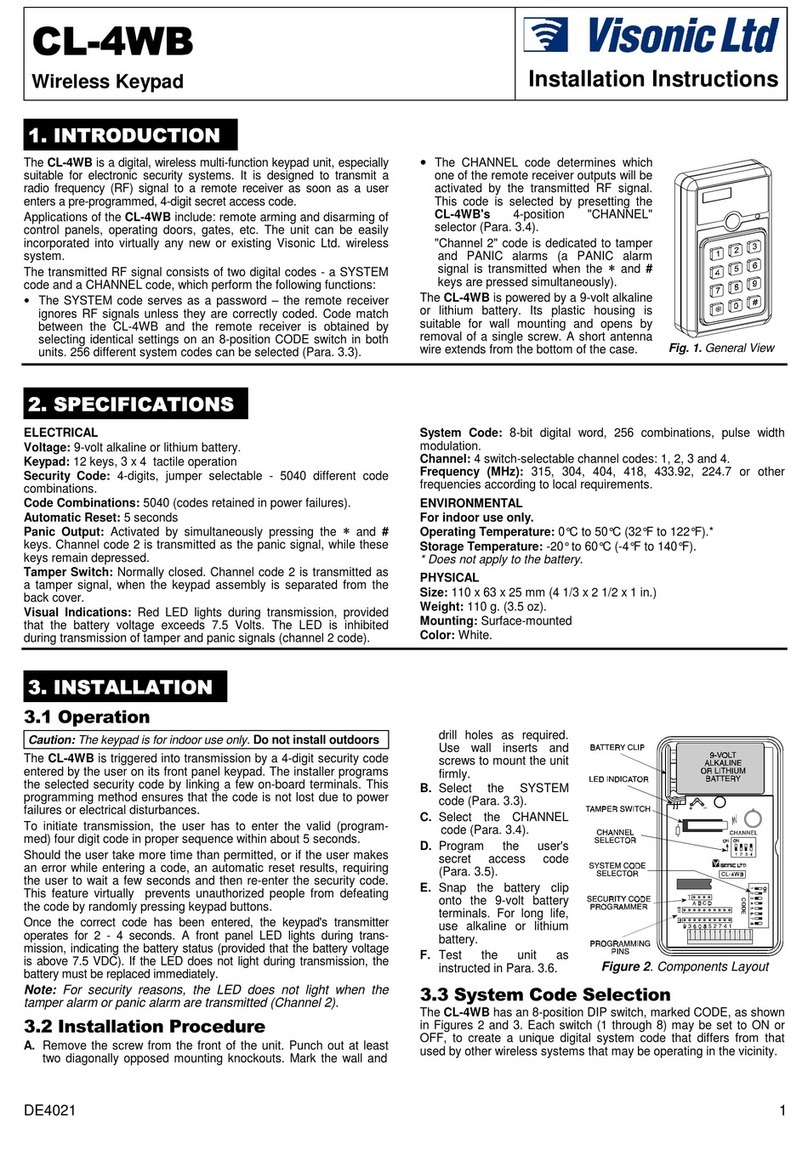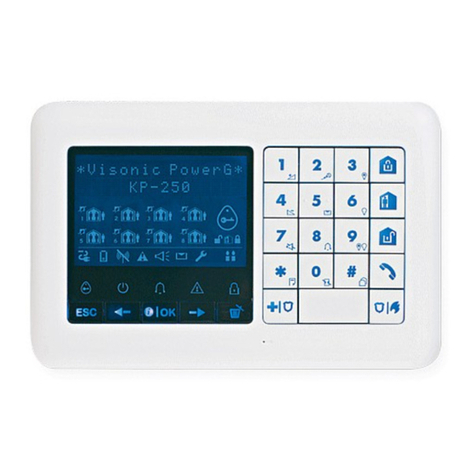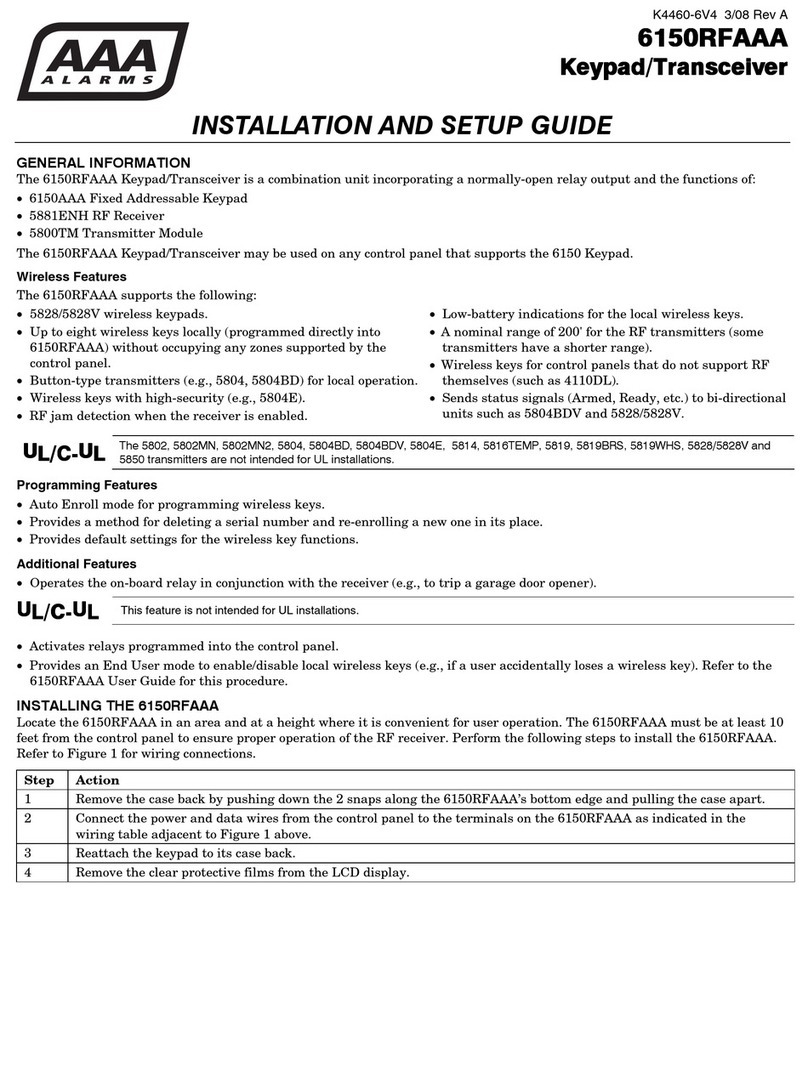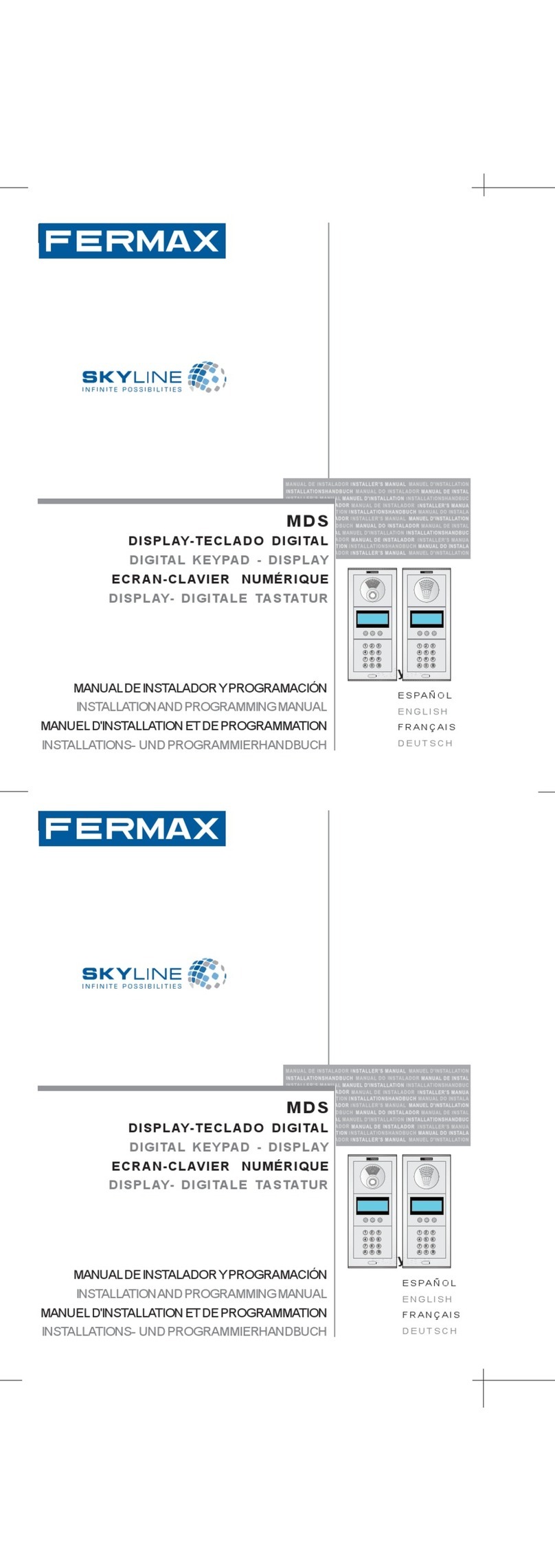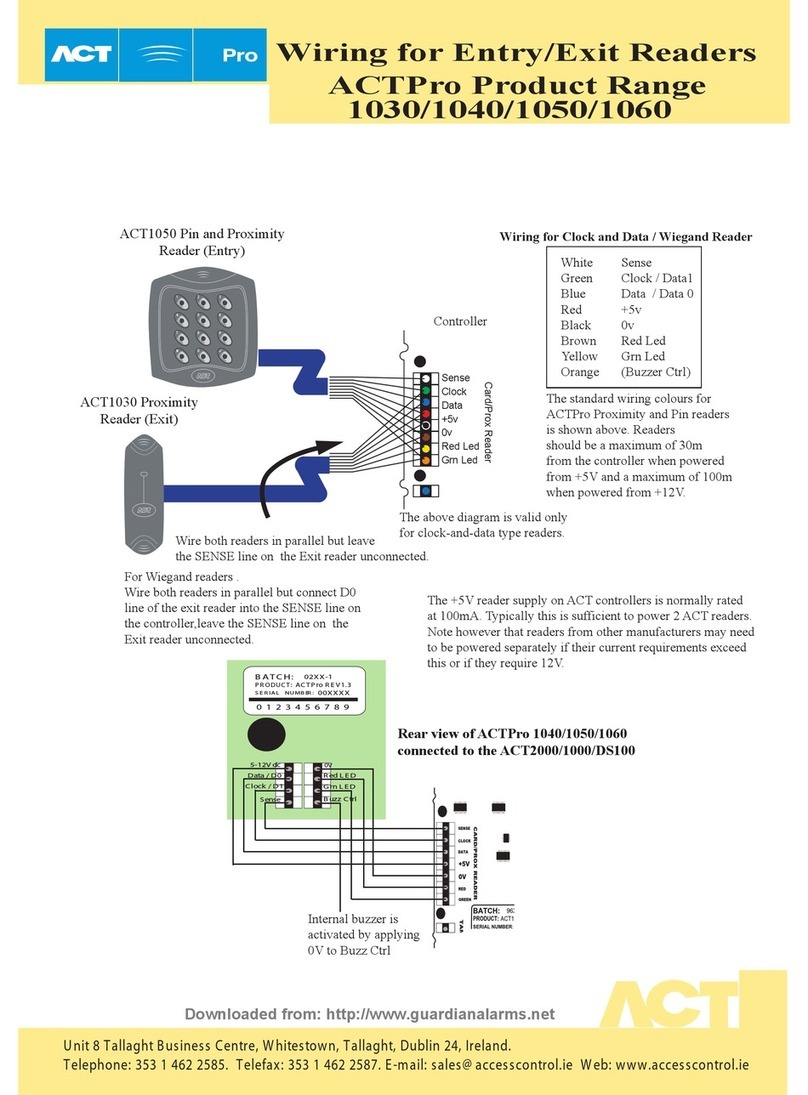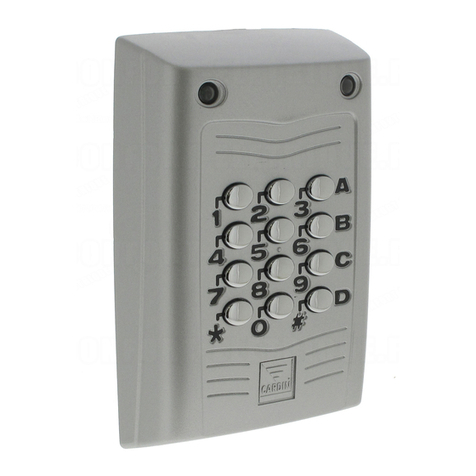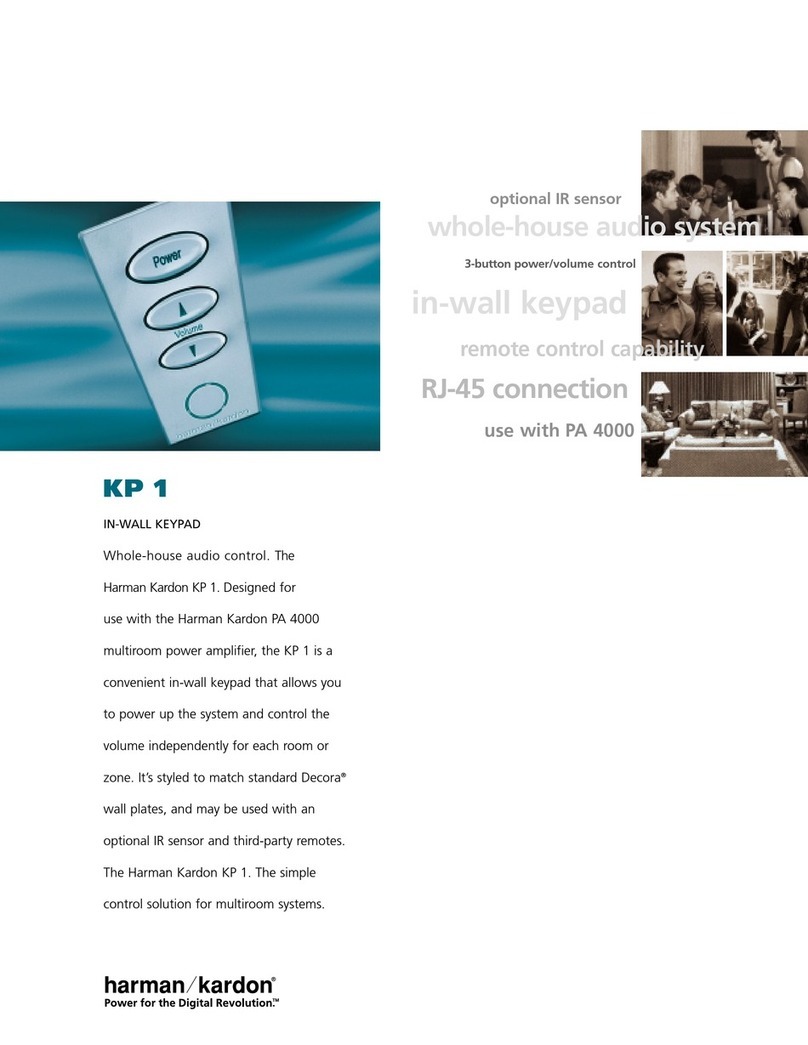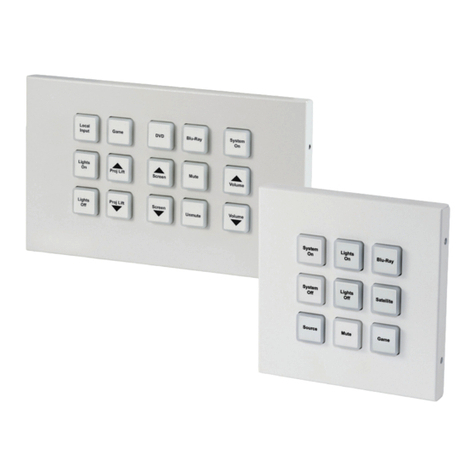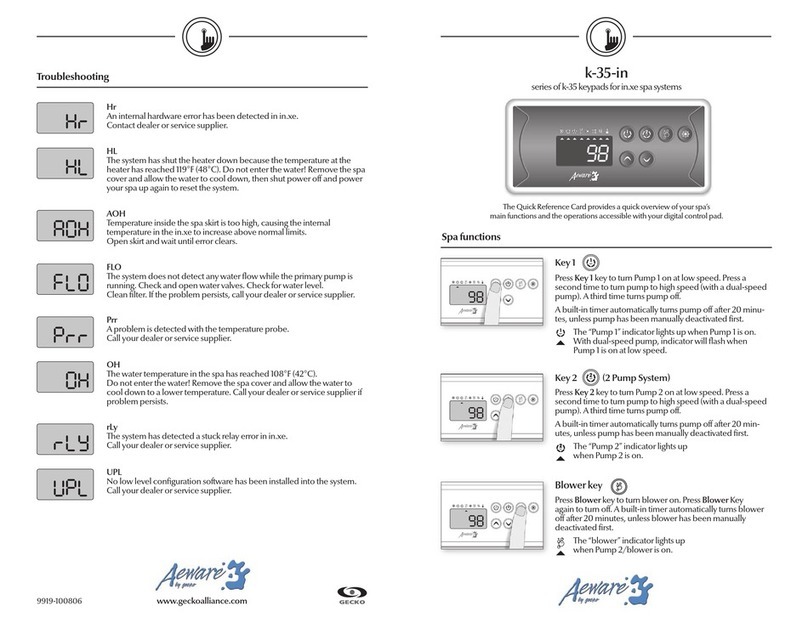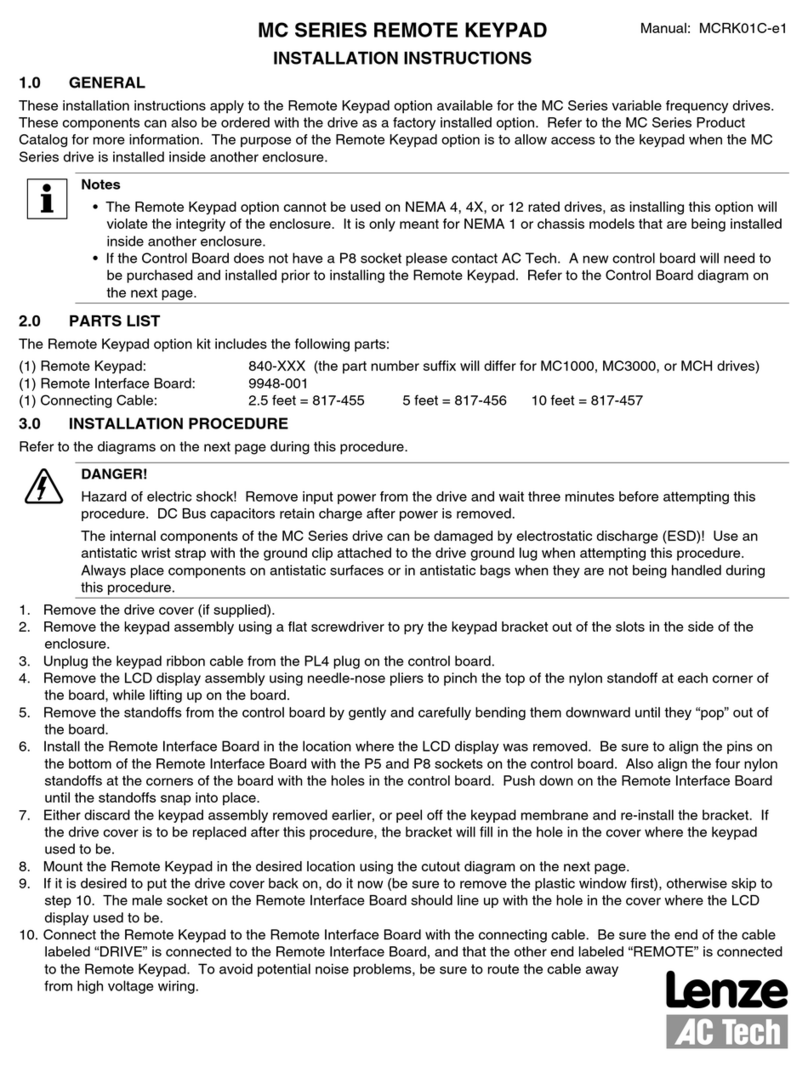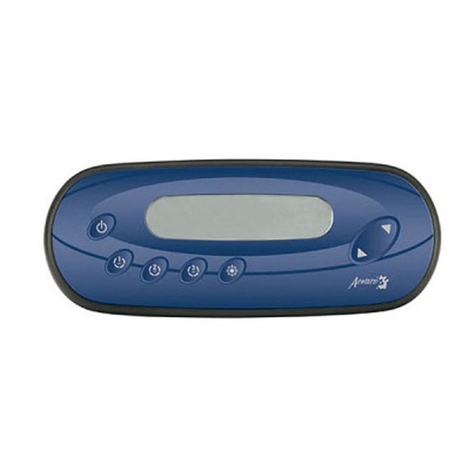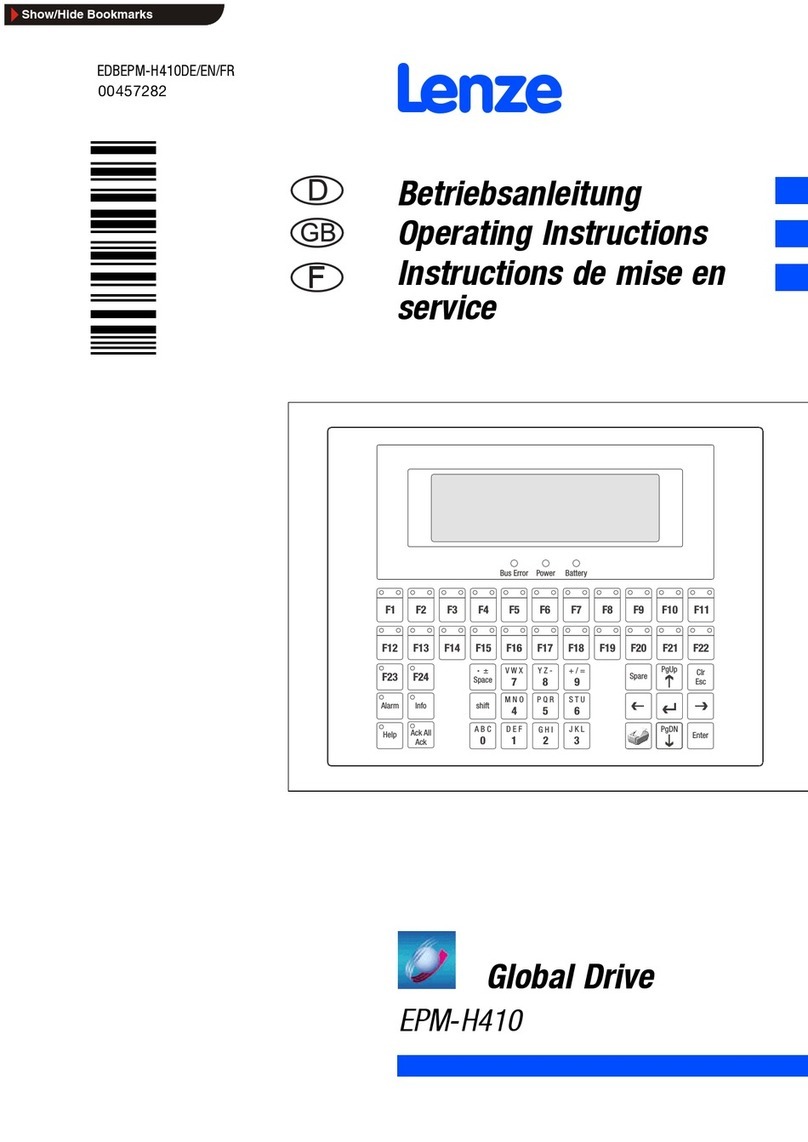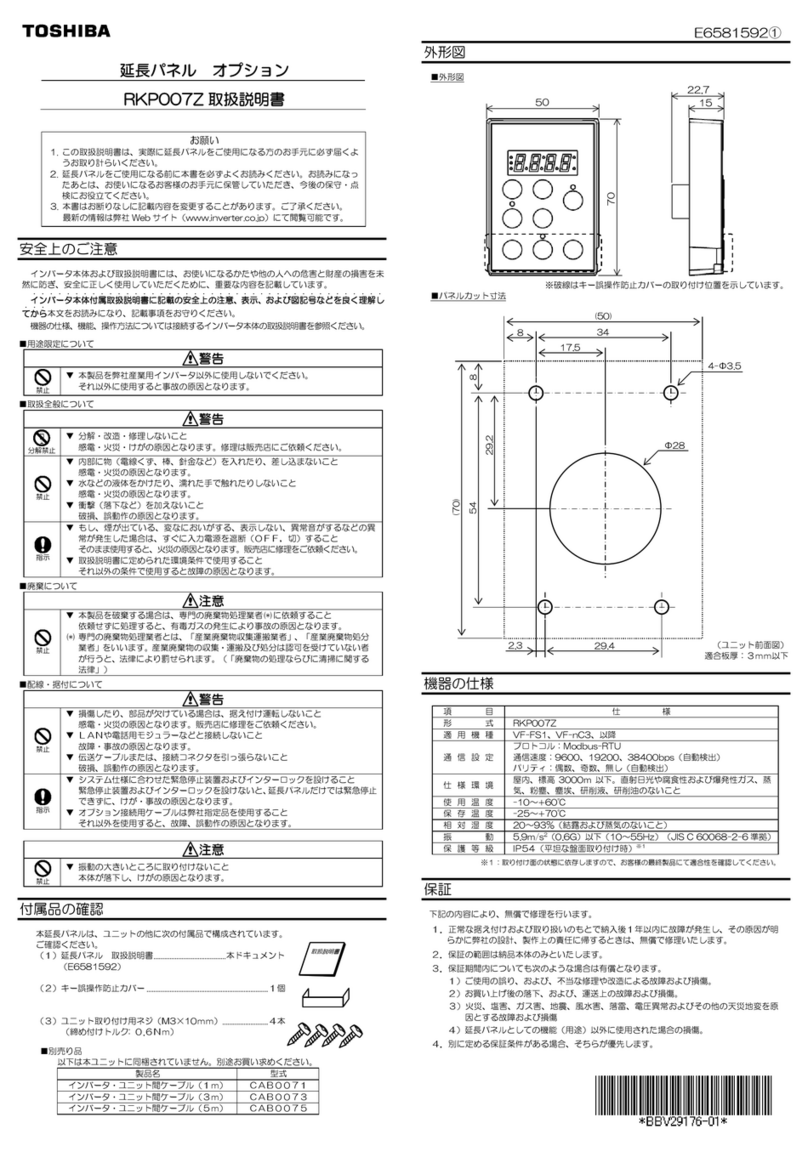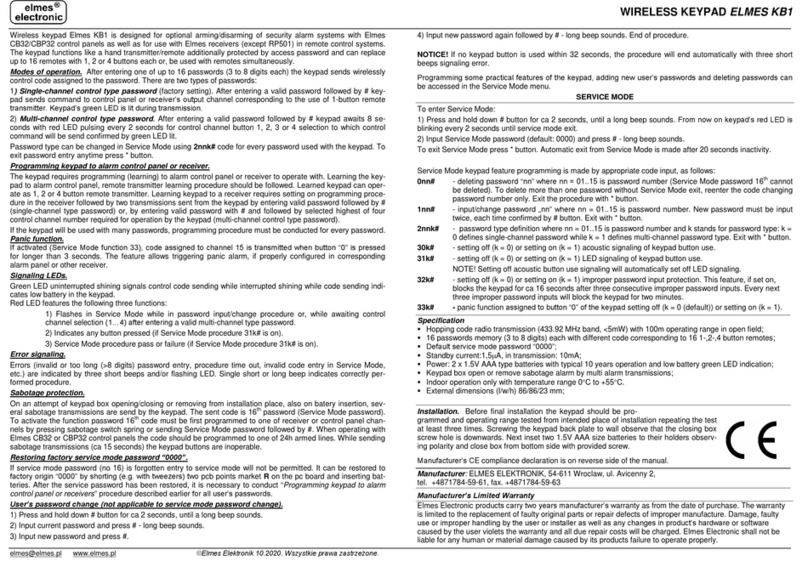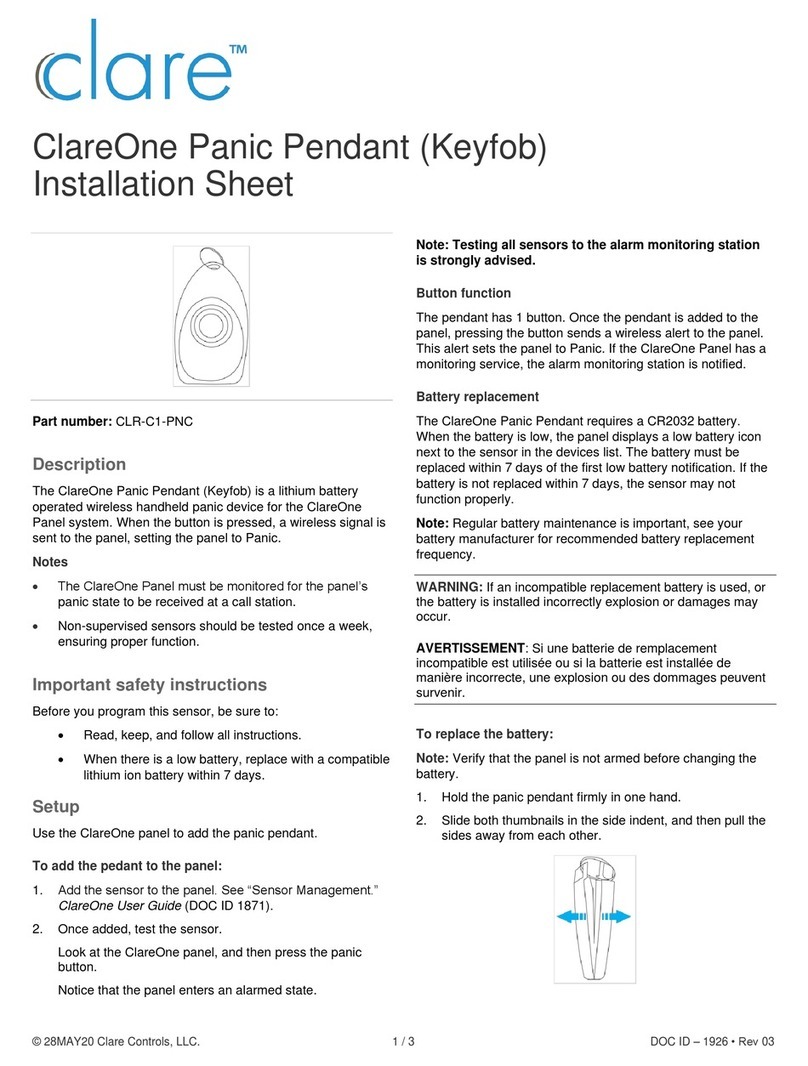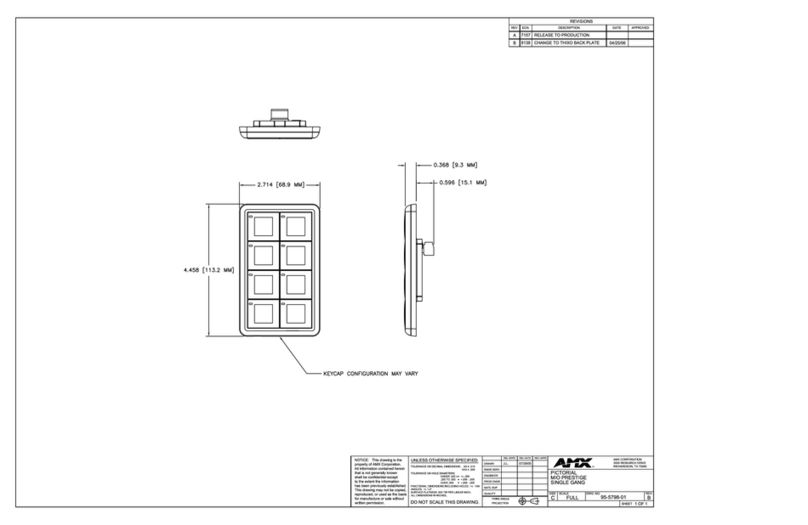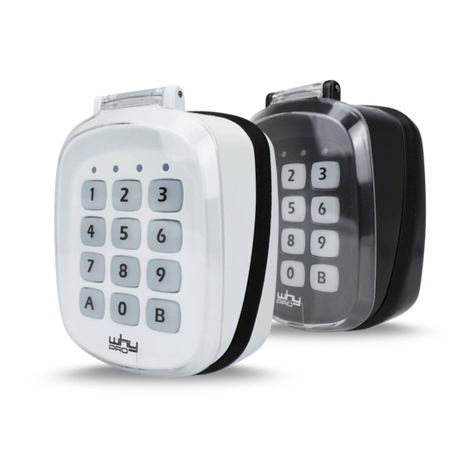
2DE4021
,QVWDOODWLRQ3URFHGXUH
A. Remove the screw
from the front of the
unit. Punch out at
least two diagonally
opposed mounting
knockouts. Mark the
wall and drill holes
as required. Use wall
inserts and screws to
mount the unit firmly.
B. Select the SYSTEM
code (para. 3.3).
C. Select the CHANNEL
code (para. 3.4).
D. Program the user's
secret access code
(para. 3.5).
E. Snap the battery clip
Figure 1 - Components Layout
onto the 9-volt battery terminals .For long life, use alkaline or
lithium battery.
F. Test the unit as instructed in para. 3.6.
6\VWHP&RGH6HOHFWLRQ
The CL-4WB has an 8-position DIP switch, marked CODE, as
shown in Figures 1 and 2. Each switch (1 through 8) may be set
to ON or OFF, to create a unique digital system code that differs
from that used by other wireless systems that may be operating
in the vicinity.
Use a ball-point pen to
set each switch lever to
match the system code
setting of the remote
companion receiver.
Figure 2 - System Code Selector
Note: The code combination 2, 4, 5, 6, 7 ON / 1, 3, 8 OFF is a
factory test code which must not be used. Also avoid codes which
are often used: all keys ON, all keys OFF or alternating ON/OFF
settings.
&KDQQHO&RGH6HOHFWLRQ
The CL-4WB has a built-in multichannel transmitter that can be
set to transmit one of 4 different channel codes to activate
different outputs in the remote receiver.
The channel selector consists of a 4-position DIP switch, marked
CHANNEL, as shown in Figures 1 and 3. The channel code
transmitted by the CL-4WB is selected by switching the
corresponding channel key (1, 2, 3 or 4) to ON.
Select the channel according to the remote receiver's output you
wish to be activated by the CL-4WB.
Note: Since channel 2 code is transmitted automatically upon
occurrence of Tamper and Panic alarms, refrain from selecting it
for other purposes.
It is also possible to select
more than one channel for
simultaneous transmission,
which will activate the
corresponding channel
outputs at the receiver.
Figure 3 - Channel Code Selector
with Channel 4 Selected.
3URJUDPPLQJ WKH 8VHUV 6HFXULW\
$FFHVV&RGH
Programming of the user's 4-digit security access code is
accomplished by linking pins in ROW I to the appropriate pins in
ROW III (the digits row) in accordance with the desired code (see
Figure 4). Use the 4 wires supplied with the keypad.
Note: Each unprogrammed pin in ROW III (pins 0, 4, 5, 6, 7, 9 in
Figure 4) must be bridged to the pin just above it in ROW II, using
the jumpers supplied with the keypad. For convenience, it is
preferable to carry out this bridging operation first and then
connect row I pins to the remaining row III pins in the correct
order.
Figure 4. Programming Access Code 3128
EXAMPLE: CODE 3128
Digit ROW I ROW III
1st Pin A →Connect to Pin 3
2nd Pin B →Connect to Pin 1
3rd Pin C →Connect to Pin 2
4th Pin D →Connect to Pin
7HVWLQJ
A. Carefully position the keypad assembly over the rear cover.
Secure both halves of the case together using the screw.
B. Have someone observe the remote receiver and report its
response to you during the following steps.
C. Operate the transmitter by entering the correct access code.
Verify that the front panel LED lights, indicating good battery
condition.
D. The receiver LED should light, indicating detection of the
transmitted RF signal.
E. Verify activation of the channel output relay(s) at the receiver,
in accordance with the setting of the CL-4WB's CHANNEL
switch.
F. While monitoring receiver channel 2 (tamper and PANIC
channel), separate the CL-4WB keypad assembly from the
back cover, thus activating the tamper switch. Verify that the
tamper signal is received continuously at receiver channel 2,
as long as the tamper switch remains activated.
G. Replace the CL-4WB keypad assembly over the back cover
and attach with the screw. Push the round plastic cap
supplied in the package over the head of the screw. Verify
that channel 2 output at the receiver restores (reverts to the
standby state).
H. While monitoring receiver channel 2 (tamper and PANIC
channel), simultaneously press the k and # keys, thus
activating the PANIC alarm. Verify that the PANIC signal is
received continuously at receiver channel 2, as long as the
two keys remain pressed.
0,6&(//$1(286&200(176
Visonic Ltd. wireless systems are reliable and are tested to high
standards. However, due to their low transmitting power (required
by FCC regulations), there are some limitations to be considered:
A. Receivers may be blocked by radio signals occurring on or
near their operating frequencies, regardless of the code
selected.
B. A receiver can only respond to one transmitted signal at a
time.
C. Wireless equipment should be tested regularly (at least once
a week) to determine if there are sources of interference and
to protect against faults.
WARNING! Changes or modifications to this unit not expressly
approved by the party responsible for compliance could void the
user's authority to operate the equipment.
